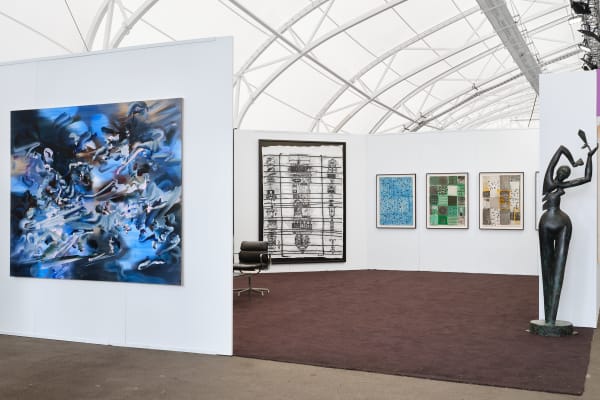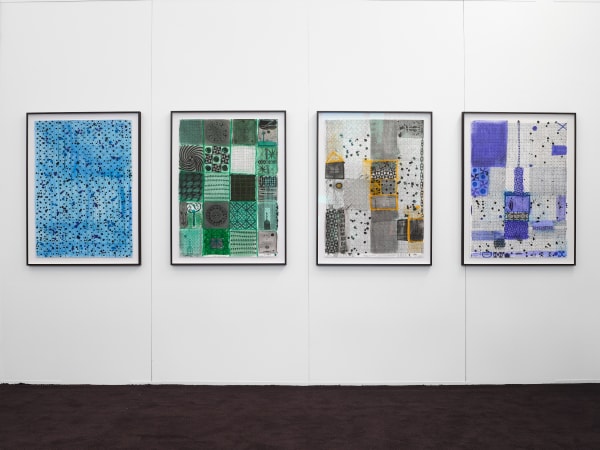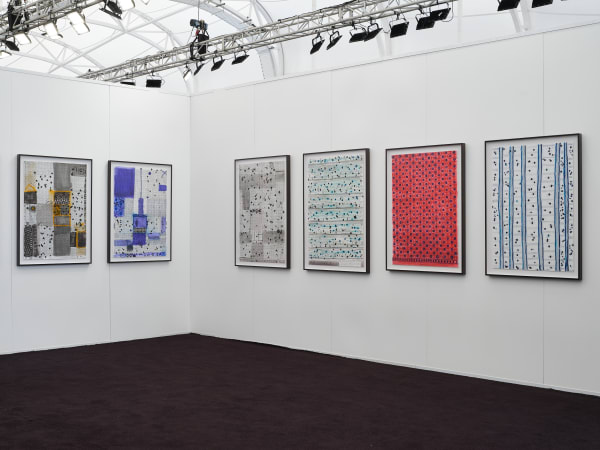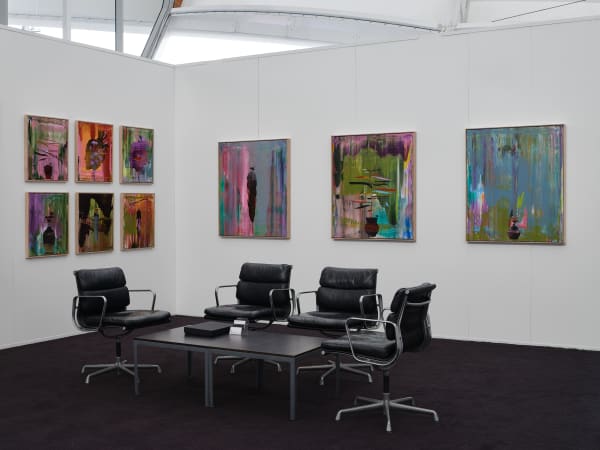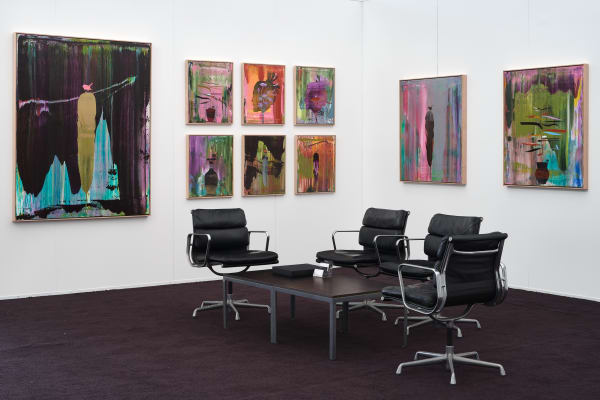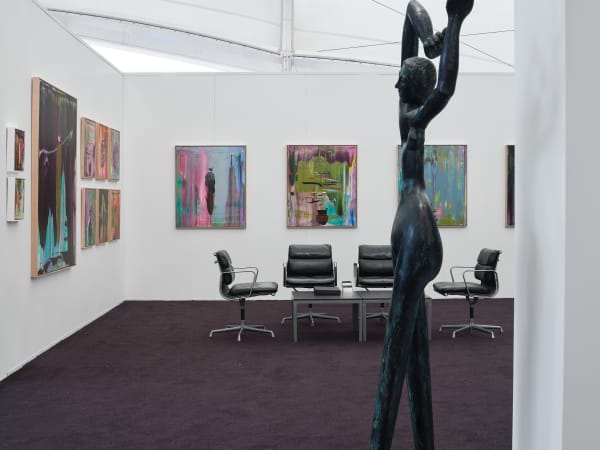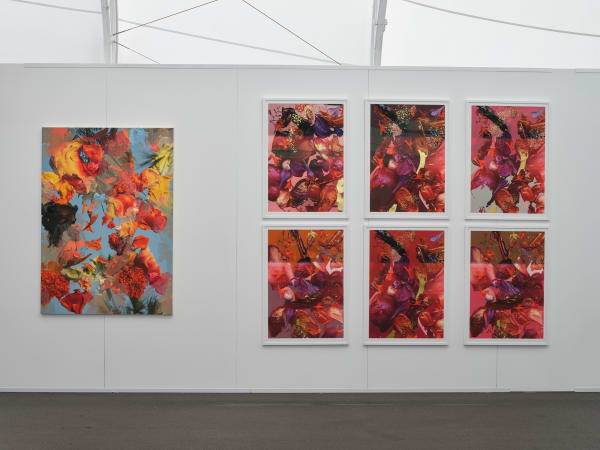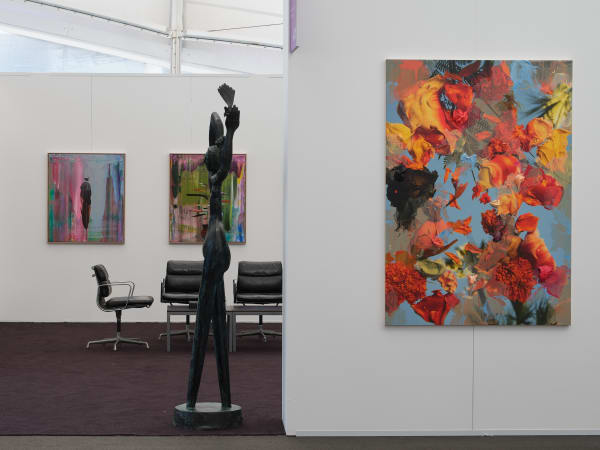The focus of our presentation at Aotearoa Art Fair 2023 is two new bodies of work by represented artists Chris Heaphy (b. 1965, NZ) and John Pule (b. 1962, Niue). These will be shown alongside a new painting by Grace Wright (b. 1992, NZ) and Andre Hemer (b. 1981, NZ) will debut a new series of works on paper.
CHRIS HEAPHY
The paintings are visual and tactile traces of personal and cultural processes, embodied in the dynamic relationships between image and paint, which in turn reflect back out into the world. Straight forward and complex, the paintings offer themselves for contemplation and interpretation by the viewer through personal and collective understanding of meanings and feelings. Chris Heaphy 2023
Chris Heaphy's (b. 1965, Palmerston North) practice has long investigated the interplay of symbols as signs and their ever-changing meanings-particularly in relation to the artist's identity and culture (European/Ngai Tahu). While the symbols are integral to the work, the artist notes "my paintings are actual things, not just about things. The application of paint, colour relationships, imagery and the processes and methodologies employed all merge to present a unique outcome, which is the painting itself." In this new body of work, he fuses the abstract and the figurative within his compositions, allowing for contemplation of the signs themselves just as much as the spaces around and in between.
Heaphy is exploring an increasingly intense visual energy with these new works, which connote an evolution in his painting practice. Vibrant, dramatic colour combinations are layered with expressive linear mark making upon the canvas. He creates movement between opacity and transparency in the paint layers, allowing depth and variation. This highlights the materiality of the paint and creates a lively and vivid atmosphere of experience and meaning.
The interplay between the symbolic object and the space around it is a compositional mainstay in Heaphy's practice, but in these works the conversation treads new ground. The silhouettes-objects of culture, creatures of nature-are still carefully placed front and centre. Yet they are less starkly defined when compared to the more monochrome figures in his previous work, now delineated with the same dynamic layered mark making and colours of the background. These respective forms have depth and colour fused throughout them; the entirety of the figure ground relationship is blended and now can be seen as one. By manipulating this relationship, the artist challenges the viewer to reassess how they interpret and experience these signs across the whole surface of the canvas. With imagery of birds atop vases, and feathers situated within a painterly composition, the viewer experiences and projects meaning through the paint and its layers of colour.
With extensive exhibition history and representation by Gow Langsford Gallery since 2008, Heaphy is a prominent figure in the contemporary art scene in New Zealand.
JOHN PULE
In the early 1990s John Pule made a visit to his homeland Niue, the first since he immigrated to New Zealand as a young child. Here, it would seem, a vast array of influences came together and were manifested for the artist, in and around the traditional Niuean hiapo. The hiapo thus provided a formal aesthetic structure for his paintings of this time and although by the early 2000s his works appeared more chaotic; it is an element frequently revisited in his practice.
This new body of works feels very fresh to me. While there is an immediate visual reference to Pulean hiapo, these works are visceral and have a lyrical stream of consciousness, similar to the poems for which he is also well known for. Where earlier works referenced shared cultural histories, mythology, and the experiences of the Polynesian diaspora, these works feel more intimate and autobiographical.
Perhaps unsurprisingly most of this grouping were made in Niue, where Pule now spends much of his time. Highly personal, his works are embellished with his own intimate imaginings. These spontaneous drawings are a response to his immediate surroundings and filled with his thoughts about the physical work he does on his ancestral land there, as well as being reflections on his recent travels around the Pacific.
The titles of these works have an association for Pule with his experiences of the nature around him; soil, rain, the forest he lives in, a walk on the reef, the sea nearby… all these things combine with the hiapo-influenced foundation. As Pule notes, "there are old structures of architecture, creatures in these drawings morph into trees, exhausting themselves so much they become something else." These works may be seen as a type of dreamscape, with the artists' stories woven throughout. - Text by Anna Jackson, 2023
